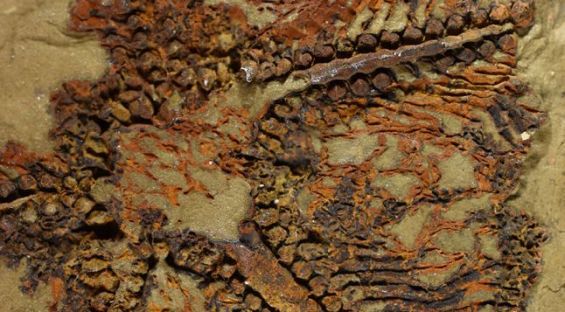A group of researchers has unearthed a fossil starship in Morocco that dates back 480 million years. The fossil specimen is the world’s oldest-known starfish ever discovered, providing an insight into the evolution of starfish and other echinoderms.
Headed by Aaron W. Hunter from the department of Earth Sciences at the University of Cambridge, researchers discovered the starfish fossil in the Fezouata Shale in Zagora, located in central Anti-Atlas, Morocco.
In their study, published Wednesday, January 20, by the Royal Society, researchers indicate that the newly-identified species is from the so-called Ordovician period.
Named «Cantabrigiaster fezouataensis» by researchers, the starfish has a unique design that lacks 60 percent of the features of a modern starfish’s body plan.
Indeed, the world’s oldest-known starfish has five feathery arms, wider that those found on modern starfish. «The level of detail in the fossil is amazing — its structure is so complex that it took us a while to unravel its significance», Dr Hunter wrote.
An ancient starfish
The discovery is a missing link to the ancestors of the fascinating sea creatures. According to the same study, prior to this recent discovery, the oldest starfish specimen record was 50 million years younger.
The Morocco fossil will help understand how the starfish and related animals evolved, millions of years ago.
«If you went back in time and put your head under the sea in the Ordovician, then you wouldn't recognize any of the marine organisms — except the starfish, they are one of the first modern animals», Hunter said. «Finding this missing link to their ancestors is incredibly exciting», he added.
Along with other researchers, the evolutionary palaeoecologist hopes to answer other questions regarding the evolution of the starfish. «One thing we hope to answer in the future is why starfish developed their five arms», he said.
«It seems to be a stable shape for them to adopt — but we don't yet know why. We still need to keep searching for the fossil that gives us that particular connection — but by going right back to the early ancestors like Cantabrigiaster, we are getting closer to that answer», he concluded.





 chargement...
chargement...













